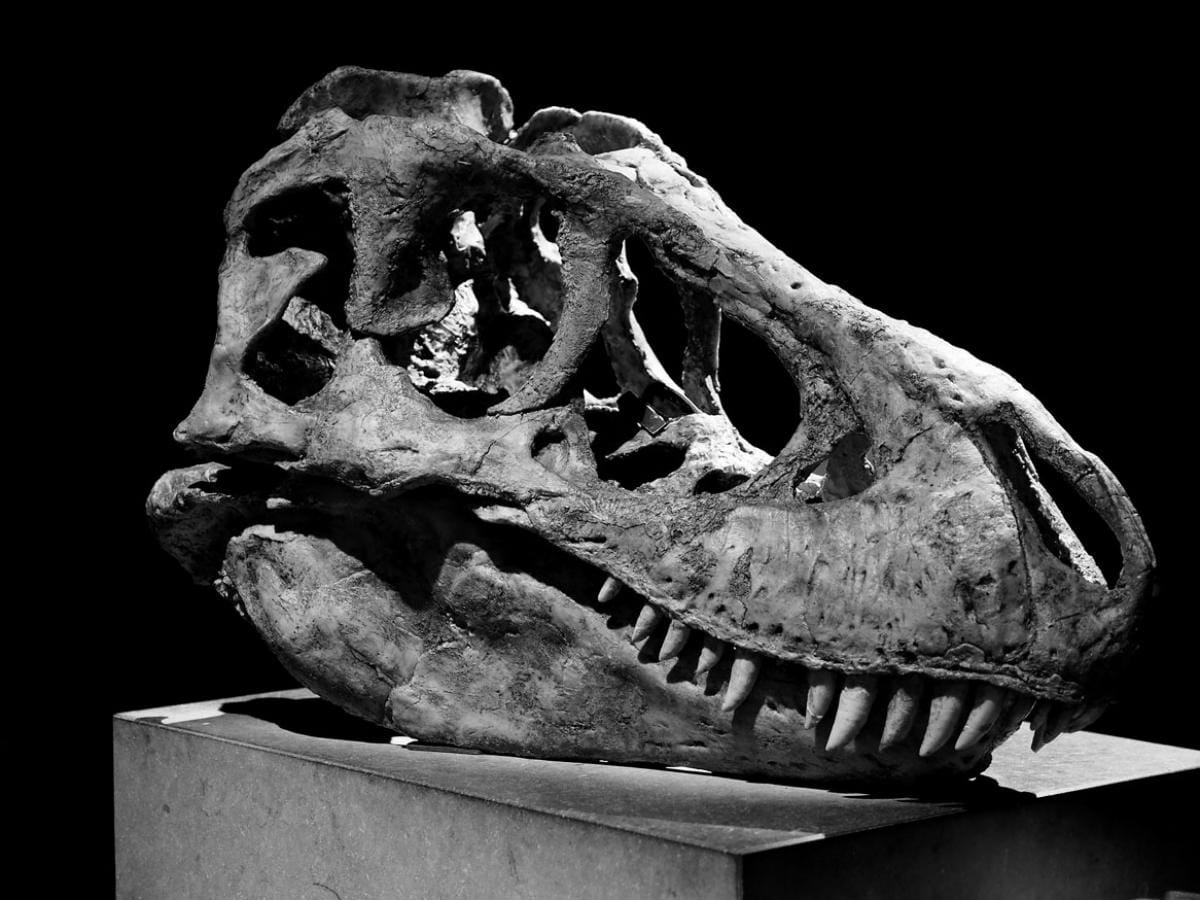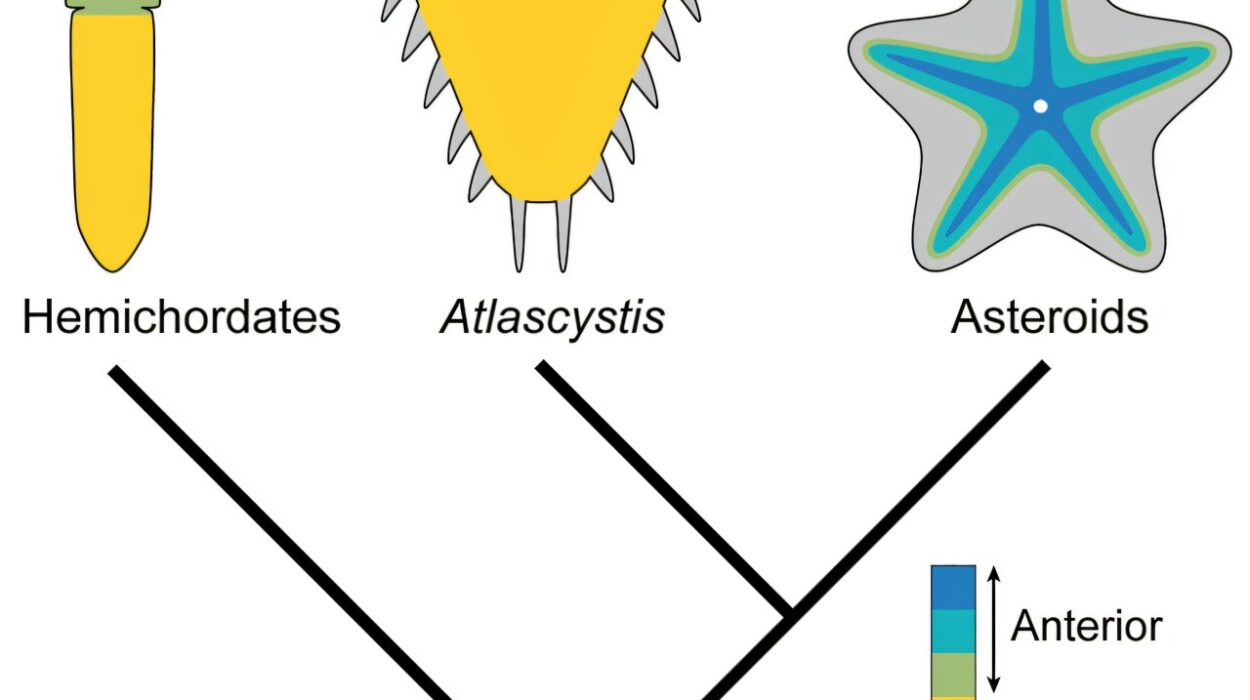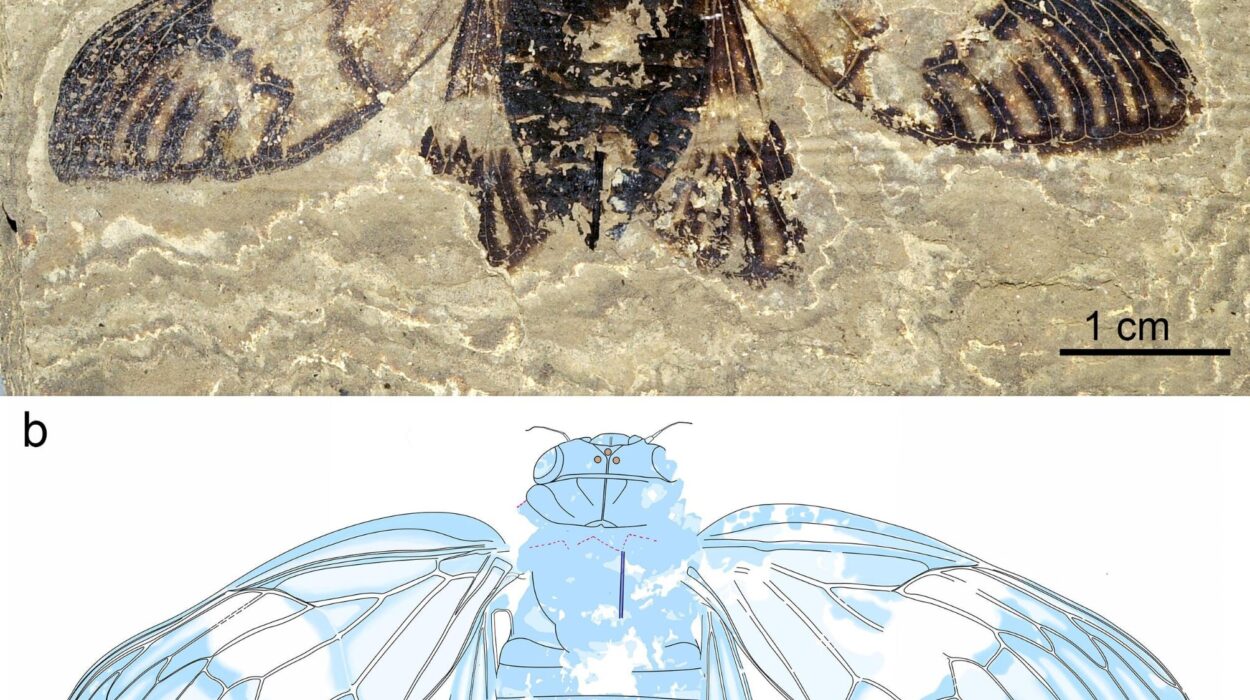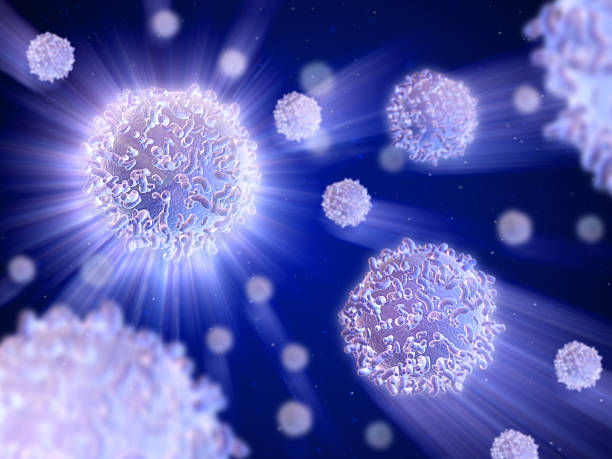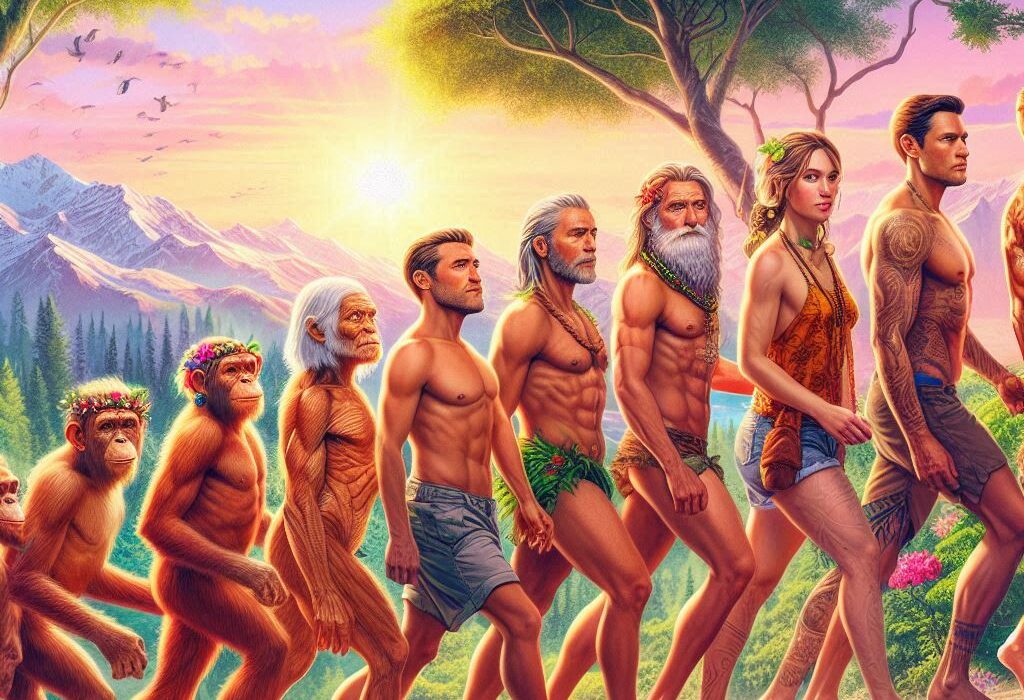Buried beneath layers of sediment, sealed in caves or entombed in permafrost, the bones of ancient creatures lie waiting—not just as skeletal echoes of long-extinct lives, but as silent keepers of something more intimate. Not every fossil is merely stone. Sometimes, nestled deep within the molecular remnants of a creature long since gone, there lies the tantalizing possibility of biological memory—DNA.
But how real is this hope? Can DNA survive the violence of time, the crush of geology, the slow decomposition of organic matter? Can we truly reach into the past and touch the genetic blueprint of beings that walked the Earth tens of thousands, even millions, of years ago?
To answer that, we must journey into the heart of both molecular biology and paleontology, and listen to the whispers of ancient life that echo not only in bone and amber, but in the very code of life itself.
Fossils: A Complex Window Into the Past
The word “fossil” evokes images of bones turned to stone—petrified remnants that have been mineralized over countless millennia. In many cases, this image is accurate. Most fossils are not made of the original organic material of the creature they represent; rather, they are mineralized casts or imprints. Over time, groundwaters rich in minerals slowly seep into bone, replacing organic matter with silica, calcite, or iron.
Such fossils are rich in anatomical information. They tell us about size, shape, and structure. They reveal locomotion, predation, and sometimes even behavior—thanks to fossilized footprints or nests. But the chemical signature of life—the DNA—rarely survives in these stony memorials. And that’s because DNA is a fragile thing.
DNA is not some eternal coil floating unscathed in the bones of the dead. It begins degrading the moment life ends. Water, oxygen, microbes, temperature changes—all become enemies of preservation. What remains after thousands of years is often fragmented, crosslinked, chemically altered, or entirely obliterated.
Yet, against odds that would seem insurmountable, fragments of ancient DNA have survived. The question is not so much whether DNA can be extracted from fossils, but under what rare and miraculous circumstances it has been.
The Molecular Clock That Keeps Ticking
To understand how DNA might be recovered from a fossil, one must first understand what DNA is. It is a molecule of biological instruction—a sequence of nucleotides encoding the development and function of every living organism. Yet it is also chemically vulnerable. DNA breaks down over time in a process known as hydrolytic cleavage. The strands fragment, the bases become chemically modified, and the once-double helix begins to collapse into unreadable shreds.
Studies show that under average conditions, DNA has a half-life of about 521 years. That means in 521 years, half of the DNA bonds will have broken down. In 1,000 years, most DNA is already severely degraded. Beyond 100,000 years, especially in temperate climates, intact DNA is virtually nonexistent. And yet… there are exceptions.
When DNA is preserved, it is almost always in specific environments: cold, dry, dark, and stable. Caves, permafrost, deserts, and deep underwater sediments offer the best chance. In these environments, microbial activity is limited, enzymatic decay slows, and chemical processes that damage DNA are reduced.
It is in such sanctuaries of time that scientists have found their most astonishing discoveries.
The Resurrection of Lost Genomes
The field of paleogenomics—the study of ancient genomes—was born from the impossible: recovering viable DNA from organisms long extinct. One of the earliest breakthroughs came from the discovery of DNA in Egyptian mummies and preserved plant seeds, showing that even under harsh conditions, fragments of genetic material might survive for thousands of years.
But the game-changer came in the 1980s, when scientists began extracting DNA from the bones of Ice Age animals preserved in Siberian permafrost. Hair, skin, and even muscle tissue yielded usable DNA. The most dramatic finds came from the remains of woolly mammoths, whose DNA was not only sequenced but, in recent years, has even been inserted into living elephant cells for comparative studies.
And then, came the Neanderthals.
In 2010, an international team led by Svante Pääbo announced that they had sequenced the Neanderthal genome. Using tiny amounts of bone powder extracted from fossils tens of thousands of years old, and applying next-generation sequencing techniques, they revealed that Homo sapiens and Neanderthals had interbred—and that the genetic legacy of our ancient cousins lives on in billions of people today.
This was more than a technical triumph. It was a human story, resurrected from dusty caves. The Neanderthals, once caricatured as brutish and simple, emerged as our close relatives—complex, intelligent, and genetically intertwined with us.
The success of Neanderthal genome sequencing opened the door to other hominin studies. From the Denisovans—identified from a single finger bone in a Siberian cave—to ancient Homo sapiens from Europe and Africa, the genetic map of our species and its relatives has been rewritten, all through the miraculous recovery of ancient DNA.
The Fine Art of Ancient DNA Extraction
Recovering DNA from fossils is not merely about digging up bones and spinning centrifuges. It’s a delicate and often maddening process. Fossils must be chosen with care—preferably those from cool, stable environments. Samples are often taken from dense, internal parts of bones or teeth to avoid surface contamination.
Then begins the painstaking process of grinding the fossil into powder under sterile, laboratory conditions. Every step must be controlled for contamination—modern human DNA, microbial interference, and chemical degradation all pose constant threats.
The extracted material is often a mixture of ancient DNA, modern contaminants, and environmental DNA. To separate the signal from the noise, researchers rely on bioinformatics: powerful algorithms that sift through billions of base pairs, reconstructing broken sequences like solving a thousand-piece jigsaw puzzle without the box.
Even with the best techniques, the DNA recovered is often less than 1% of the original genome. But advances in sequencing technology, particularly next-generation sequencing, have revolutionized what is possible. Now, even the tiniest fragments can be amplified, read, and compared.
When DNA Is No Longer There
Not all fossils, even well-preserved ones, yield DNA. Some are too old, too exposed, or too altered. For fossils older than 1 million years, DNA extraction is virtually impossible—at least with current technology. The environmental damage is simply too great.
That’s why you won’t see genetic material from dinosaurs, despite popular portrayals in fiction. Jurassic Park was a thrilling idea, but scientifically implausible. Dinosaur fossils are over 65 million years old. The DNA in their bones has long since degraded past any usable state. Claims of recovered dinosaur DNA have surfaced over the years, but none have held up to peer-reviewed scrutiny.
There are, however, proteins—the building blocks that DNA helps encode—that can sometimes survive longer. Collagen, for example, has been detected in dinosaur bones, offering chemical clues to physiology and even evolutionary relationships. But proteins don’t carry the full instructions of life. They’re echoes, not the voice itself.
Yet new techniques, like paleoproteomics, and even speculation about DNA analogs surviving under rare geological conditions, continue to keep the dream alive. Science, after all, is not static. What seems impossible today may be tomorrow’s routine.
Amber and the Illusion of Immortality
If there is any setting that conjures up the fantasy of perfectly preserved DNA, it is amber. Insects, frogs, and lizards trapped in golden resin millions of years ago seem suspended in time—frozen mid-flight or mid-bite, their bodies uncorrupted.
Michael Crichton’s vision of dinosaur DNA extracted from mosquito bellies trapped in amber was grounded in a seductive logic. And amber does preserve soft tissues remarkably well. However, it turns out that the harsh chemistry of resin and the entrapment process itself damages DNA more than it protects it.
Despite decades of attempts, no reliable ancient DNA has ever been recovered from Mesozoic amber. Most such claims have been debunked or attributed to contamination. DNA does not fossilize like bone; it fades and fragments, no matter how pristine the outer shell appears.
Still, amber does preserve other valuable data. Microscopic structures, gut contents, even cellular outlines have survived. It may not give us dinosaur DNA, but it gives us snapshots of ancient ecosystems that no other medium can.
Frozen Time: The Power of Permafrost
If amber is an illusion of eternity, permafrost is the real deal. Cold, stable environments have yielded some of the most extraordinary examples of DNA preservation. From frozen mammoths to prehistoric wolves, ancient horses to extinct bears, the Arctic is a treasure trove of frozen time.
In 2021, scientists recovered the oldest DNA ever sequenced—from a mammoth tooth buried in Siberian permafrost for over 1.2 million years. Though heavily degraded, enough fragments remained to reconstruct large parts of the genome and trace the evolution of the mammoth lineage.
This record-shattering find pushed the boundaries of ancient DNA science and suggested that, under perfect conditions, genetic material might survive far longer than previously imagined. Permafrost, in effect, slows the molecular clock, preserving threads of life that might otherwise be lost.
As climate change threatens these frozen archives, researchers are racing against time to recover what they can before thawing and microbial activity destroy it forever.
What Ancient DNA Has Taught Us
The ability to extract DNA from fossils has transformed paleontology from a field rooted in structure and form to one enriched by function, kinship, and history. We now know that Neanderthals and Denisovans interbred with Homo sapiens, that woolly mammoths shared adaptations to Arctic life, that ancient dogs followed humans across continents.
We have traced the rise and fall of populations, the migrations of prehistoric peoples, the spread of agriculture, and the emergence of diseases. Ancient DNA has rewritten human history in ways no archaeologist could have predicted.
And it’s not just about human ancestry. From extinct cave bears to ancient bison, from saber-toothed cats to prehistoric birds, ancient DNA has helped reconstruct entire ecosystems. It has revealed which genes helped animals adapt, migrate, or go extinct. It has shown us not just who lived—but how they lived.
The Ethical and Scientific Future
The promise of ancient DNA raises deep questions. Should we bring extinct species back to life? Should we clone a mammoth, or resurrect a lost bird? The technical hurdles are enormous, but increasingly less insurmountable. CRISPR gene editing, synthetic biology, and reproductive cloning technologies are all advancing.
But science must be paired with ethics. Just because we can extract DNA—or even potentially reengineer it—does not mean we should. Conservation of living species, respect for ancient remains, and the responsible use of genetic knowledge must guide the future of paleogenomics.
Still, the sheer wonder of what has been achieved—the ability to hear the genetic echoes of lost lives—is nothing short of miraculous. The double helix, so fragile in death, becomes a bridge across time.
Conclusion: A Whisper Turned to Song
So, can DNA be extracted from fossils? Yes—sometimes. And when it is, the rewards are extraordinary.
But it’s not every fossil, and it’s not every era. It is a delicate dance between chemistry and chance, between preservation and decay. And yet, from powdery bones and frozen hair, from molars sealed in caves and tusks trapped in ice, we have extracted the language of the dead—and taught it to speak again.
Each strand of ancient DNA is a letter from the past. A message in a bottle tossed not into the ocean, but into time. And now, at the convergence of biology, technology, and human curiosity, we are beginning to read it.
In the end, the story of ancient DNA is not just about science. It is about memory. About the deep, shared history of life on Earth. And about the strange, almost spiritual act of touching the distant past with the hands of the present, and hearing, faint but clear, the ancient heartbeat of evolution.
